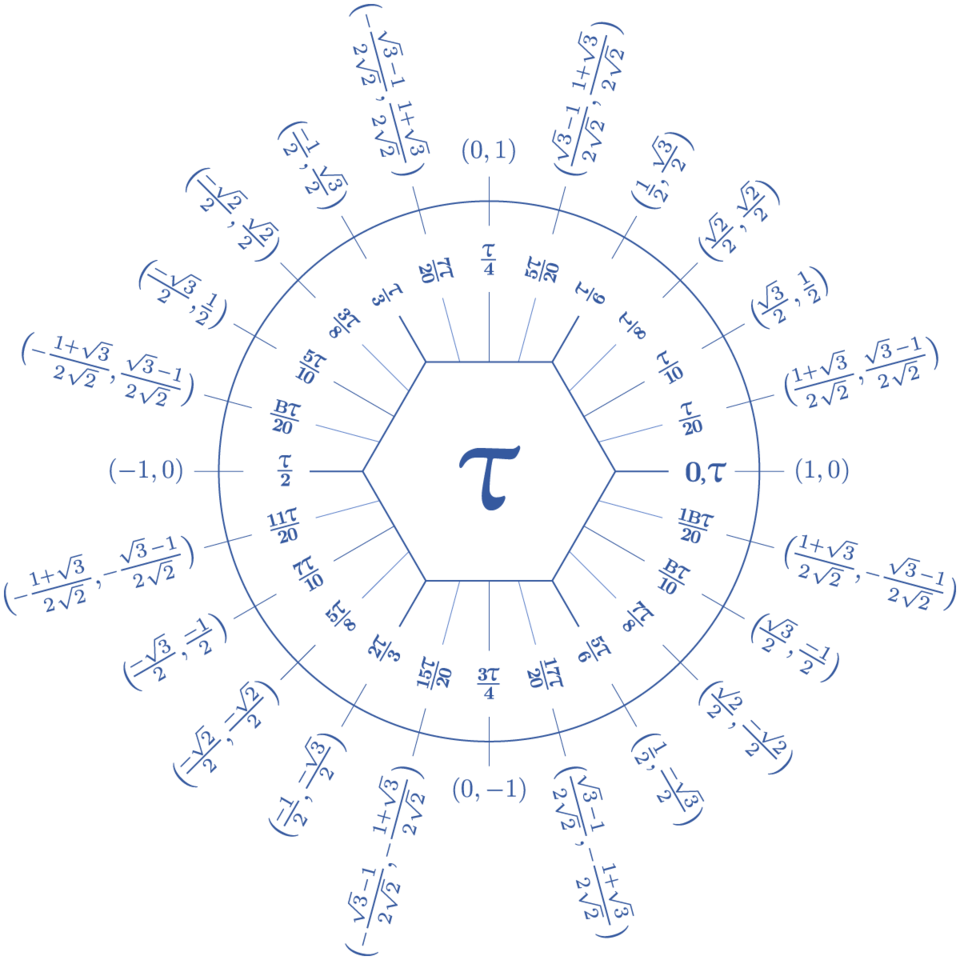The way of the tau
 An astute reader recently brought to my attention the nascent movement afoot to replace π in common usage with the number now unfortunately known as 2π—viz., 6;349419 (dec. 6.283186):
An astute reader recently brought to my attention the nascent movement afoot to replace π in common usage with the number now unfortunately known as 2π—viz., 6;349419 (dec. 6.283186):
- Pi Is Wrong! - By Bob Palais
- The Tau Manifesto - By Michael Hartl
(For a reasonably convincing argument on why the letter τ (tau) in particular should be adopted for this value, please read Mr. Hartl's manifesto.)
The fundamental point here is that, in trigonometry and all other manner of angle-measuring endeavors, what we care about is the radius of a circle, not its diameter. The one follows from the other to be sure, but at the end of the day the diameter is more usefully considered twice the radius than the radius is half the diameter. A circle is a circumference around a center—it is the measure of this distance between center and circumference that is elemental to the idea of a circle, not the rather incidental fact that its full width is twice that same distance.

 The following is a brief survey of some elemental properties of hexagons, and why they might be useful. It is not intended to be a comprehensive treatment of the subject. My specific concern here is with the mathematical properties of hexagons, and, to an extent, their role in the natural world. I have avoided discussing hexagons as they pertain to human culture, religion, history, and other "local" concerns, though there are many fascinating instances of hexagonality and sixness in these areas, and they will no doubt be treated more fully elsewhere at another time.
The following is a brief survey of some elemental properties of hexagons, and why they might be useful. It is not intended to be a comprehensive treatment of the subject. My specific concern here is with the mathematical properties of hexagons, and, to an extent, their role in the natural world. I have avoided discussing hexagons as they pertain to human culture, religion, history, and other "local" concerns, though there are many fascinating instances of hexagonality and sixness in these areas, and they will no doubt be treated more fully elsewhere at another time.